Butterfly Garden Ideas Florida: Create a Vibrant Haven for Pollinators
Creating a butterfly garden in Florida can be a rewarding experience, bringing vibrant colors and the gentle fluttering of wings to your backyard. With more than 180 butterfly species native to the state, you have a unique opportunity to attract a diverse array of butterflies by choosing the right plants and layout.
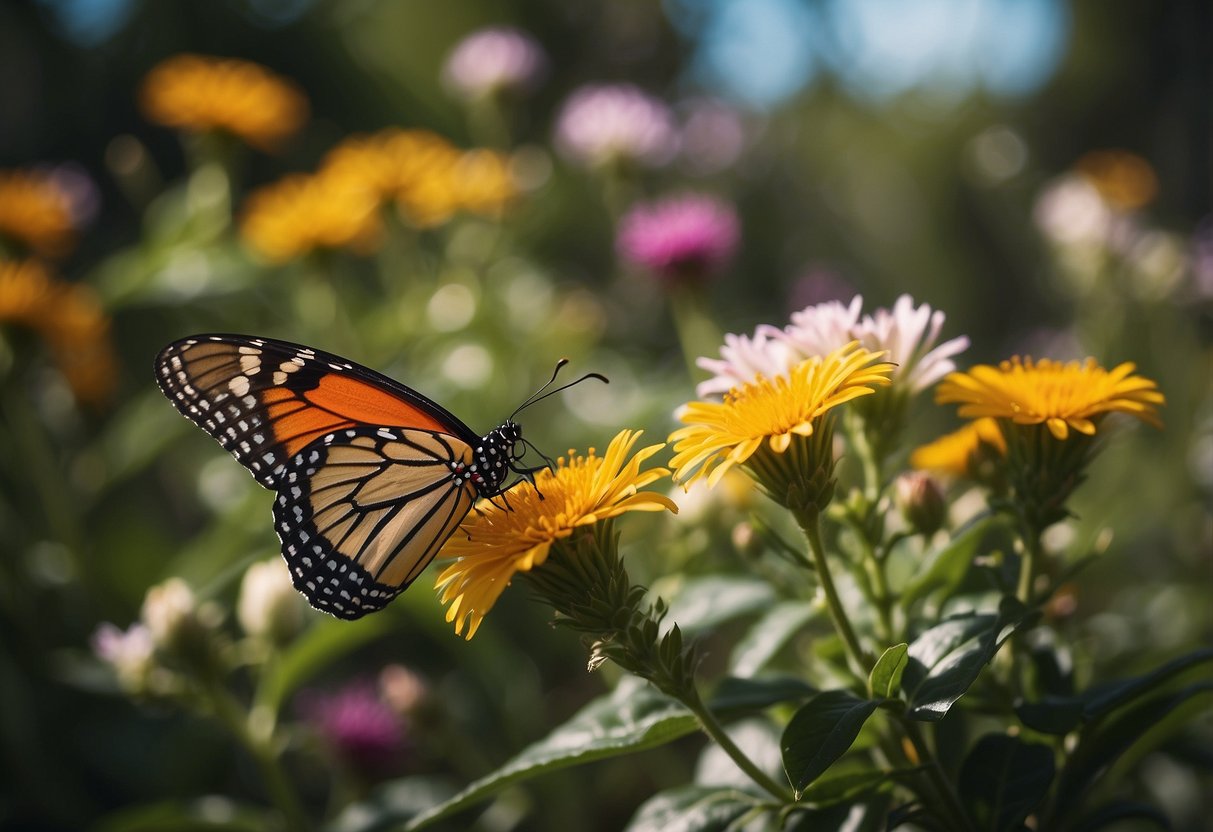
Wondering how to transform your garden into a butterfly haven? From selecting native plants to understanding the best placement for them, we’ll guide you through the essentials. With the right approach, you can create a thriving ecosystem that not only looks beautiful but also supports local wildlife.
1) Choose Native Flowers

Choosing native flowers for your butterfly garden is important. Native plants need less water and are more resistant to local pests and diseases.
Consider adding Milkweed. It’s a favorite for Monarch butterflies.
Black-eyed Susans are another great choice. They attract lots of pollinators.
Using native plants like these helps support local butterflies and makes your garden thrive.
For a variety of options, you can explore this guide to native plants.
2) Add Milkweed for Monarchs
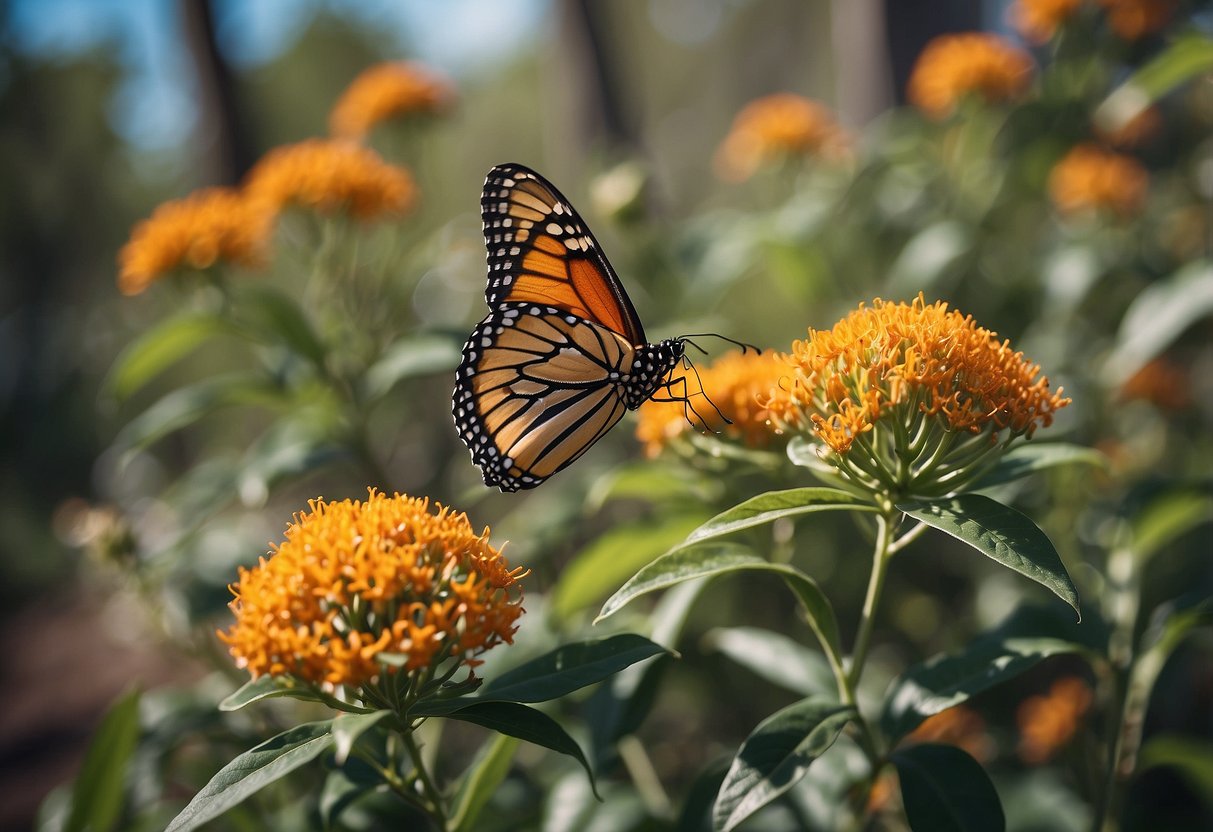
Milkweed is essential for attracting monarch butterflies to your garden. Monarchs lay their eggs on milkweed, which provides food for their caterpillars.
Consider growing native Florida milkweed like Showy Milkweed. It thrives in well-drained soil and full sun.
Another good option is Swamp Milkweed, which blooms from summer through fall and is adaptable to home gardens.
3) Provide Fresh Water

Butterflies need fresh water to stay hydrated. You can provide water by placing shallow dishes or birdbaths in your garden.
Add a few pebbles or stones to the water sources. This gives butterflies a safe place to land and drink.
Remember to change the water regularly to keep it clean and fresh.
4) Create Sun and Shade Spots

Butterflies are cold-blooded and need warmth from the sun to become active. Choose an area that gets at least six hours of sunlight each day.
But not all plants thrive in full sun. Include some shaded spots with trees or tall plants. This mix will help cater to both butterflies and the diverse plants they need.
5) Avoid Using Pesticides

Pesticides can harm butterflies and their larvae, which you want to avoid in your garden.
Choose natural solutions like lower risk oils or soaps to target specific pests.
By avoiding pesticides, you create a safer environment for butterflies, helping them thrive.
For more details, visit creating a safe haven.
6) Plant Lantana

Lantana is a fantastic plant for attracting butterflies to your garden. Its bright, colorful flowers are a magnet for many butterfly species.
This plant is easy to grow and thrives in Florida’s warm climate. It can handle full sun and requires minimal maintenance.
Lantana flowers come in various colors like yellow, orange, pink, and red. This variety makes your garden look vibrant and lively.
7) Add Butterfly Bush
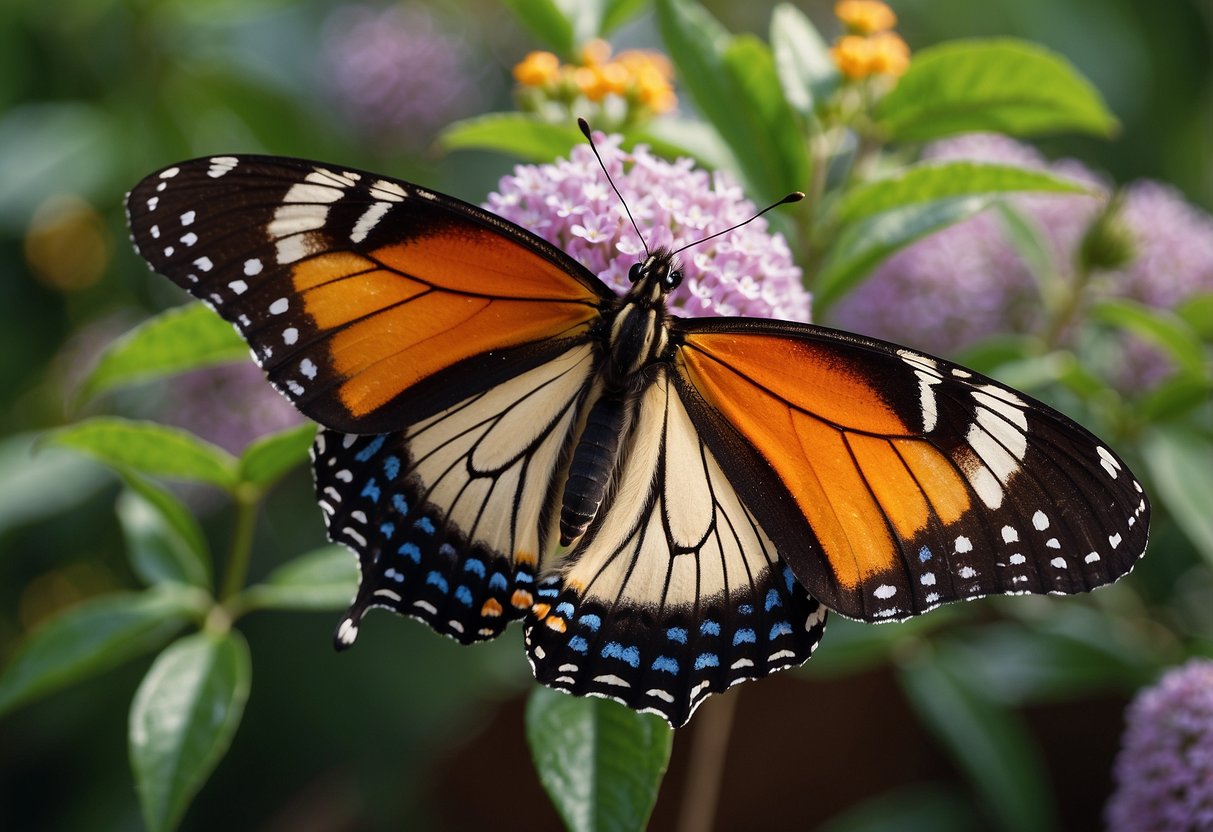
The Butterfly Bush is an excellent choice for your Florida garden. This plant’s fragrant flower clusters attract many butterflies and bees, adding life and color to your outdoor space.
The blooms can be purple, white, or pink, making your garden vibrant and beautiful. Butterfly Bushes are semi-evergreen perennials, ensuring they stay lush throughout the year.
Planting a Butterfly Bush will help create a welcoming environment for butterflies, enhancing your garden’s appeal. For more details on this plant, visit Best Plants to Attract Butterflies in Florida.
8) Grow Pentas
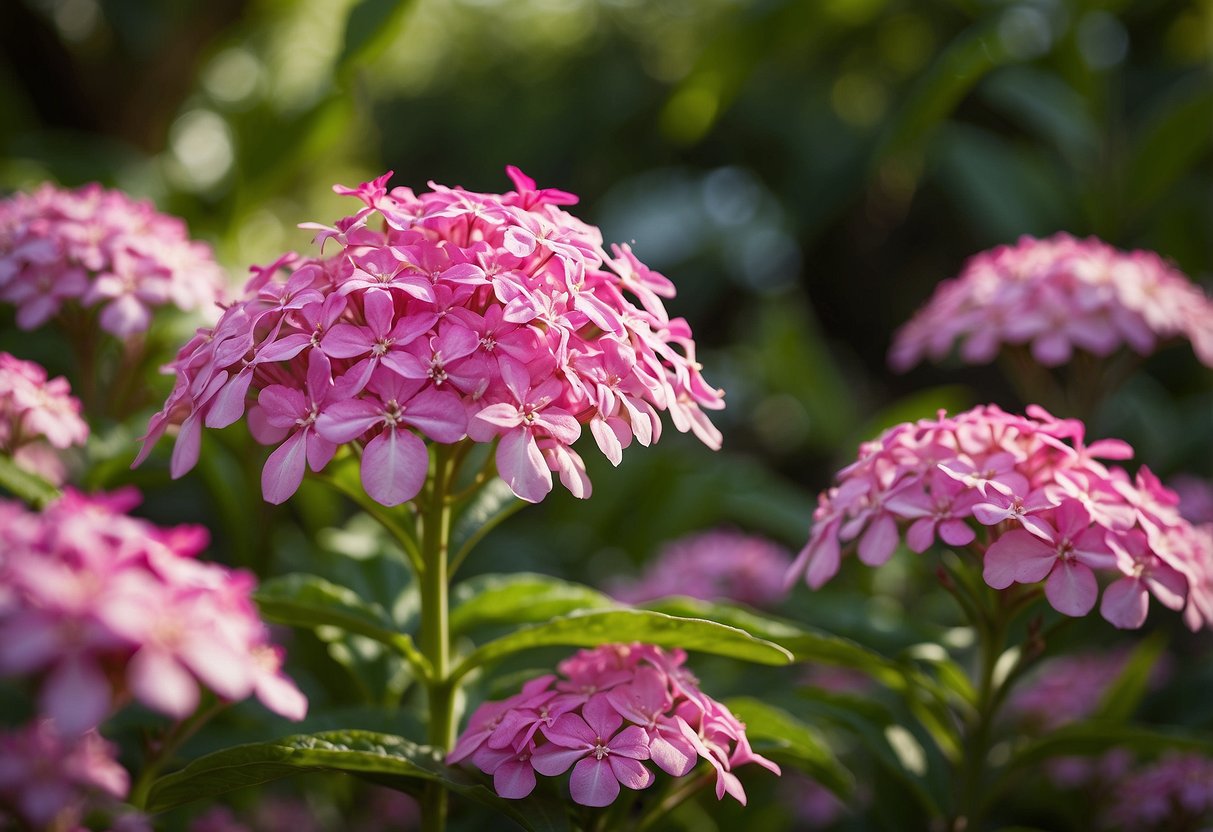
Pentas are a great choice for a butterfly garden in Florida. They are well-suited to the state’s climate and attract many butterflies.
Traditional pentas can grow up to 2-3 feet tall and might spread out. If you prefer smaller plants, dwarf varieties like Lucky Star Raspberry are more compact and stay around 12-15 inches in height.
For the best results, plant pentas in well-draining soil. They thrive in warm temperatures and full sunlight. Be sure to keep them moist while they establish. They also work perfectly as nectar plants, providing food for butterflies.
9) Use Coral Honeysuckle

Coral honeysuckle is a great choice for your Florida butterfly garden. This native vine thrives in all areas of Florida and produces vibrant, tubular flowers that attract both butterflies and hummingbirds.
You can plant it in a spot where it has room to climb, like a trellis or a fence. The bright flowers will add a splash of color to your garden.
Learn more about how to grow and care for coral honeysuckle. This plant is low maintenance, making it perfect for beginner gardeners and butterfly enthusiasts alike.
10) Add Passionflower Vine

Adding a passionflower vine to your butterfly garden is a fantastic choice. These vines grow quickly and produce beautiful, intricate flowers that can come in shades of purple, blue, red, pink, yellow, and white.
Passionflower vines provide an excellent habitat for caterpillars, especially for Gulf fritillary butterflies. They can climb walls, fences, or even cover arbors, giving your garden a lush, tropical feel.
Birds also love the berries that passionflower vines produce. This way, you can attract both butterflies and birds, making your garden a lively and colorful space. For more information, check out Passionflower Vine.
Creating a Butterfly Garden in Florida

In Florida, butterfly gardens thrive with the right balance of sun, soil, and plant choices. Picking suitable plants and accounting for the local climate are key steps in creating a successful butterfly garden.
Factors to Consider for Florida’s Climate
Florida’s climate brings warmth and humidity, which are favorable for butterflies. When choosing a spot for your garden, select an area that gets at least six hours of sunlight daily. Butterflies need the sun to regulate their body temperature.
Florida can also be quite rainy. Ensuring proper drainage is essential. Loosen the soil with a garden fork or tiller and mix in organic matter, like compost, to improve soil fertility and drainage. This helps plants grow strong and healthy, providing better nourishment for butterflies.
Wind protection is crucial as well. Plant taller shrubs or install barriers to shield your garden from strong winds that might disrupt feeding and gathering of butterflies.
Choosing the Right Plants
Selecting the right plants is vital for attracting butterflies in all stages of their life cycle. Florida gardens benefit from a mix of nectar plants for adult butterflies and host plants where caterpillars can feed.
Nectar plants, such as milkweed, lantana, and verbena, provide food for adult butterflies. These plants should be vibrant and fragrant to attract butterflies.
Host plants like passion vine, pipevine, and cassia allow butterflies to lay eggs that hatch into caterpillars. Planting a variety of these ensures that butterflies stay and reproduce in your garden.
Adding small water features like shallow dishes or birdbaths can also be beneficial. Butterflies need water to drink and maintain their hydration. By catering to their food, water, and shelter needs, your garden will become a butterfly haven in no time.
Caring for Your Butterfly Garden
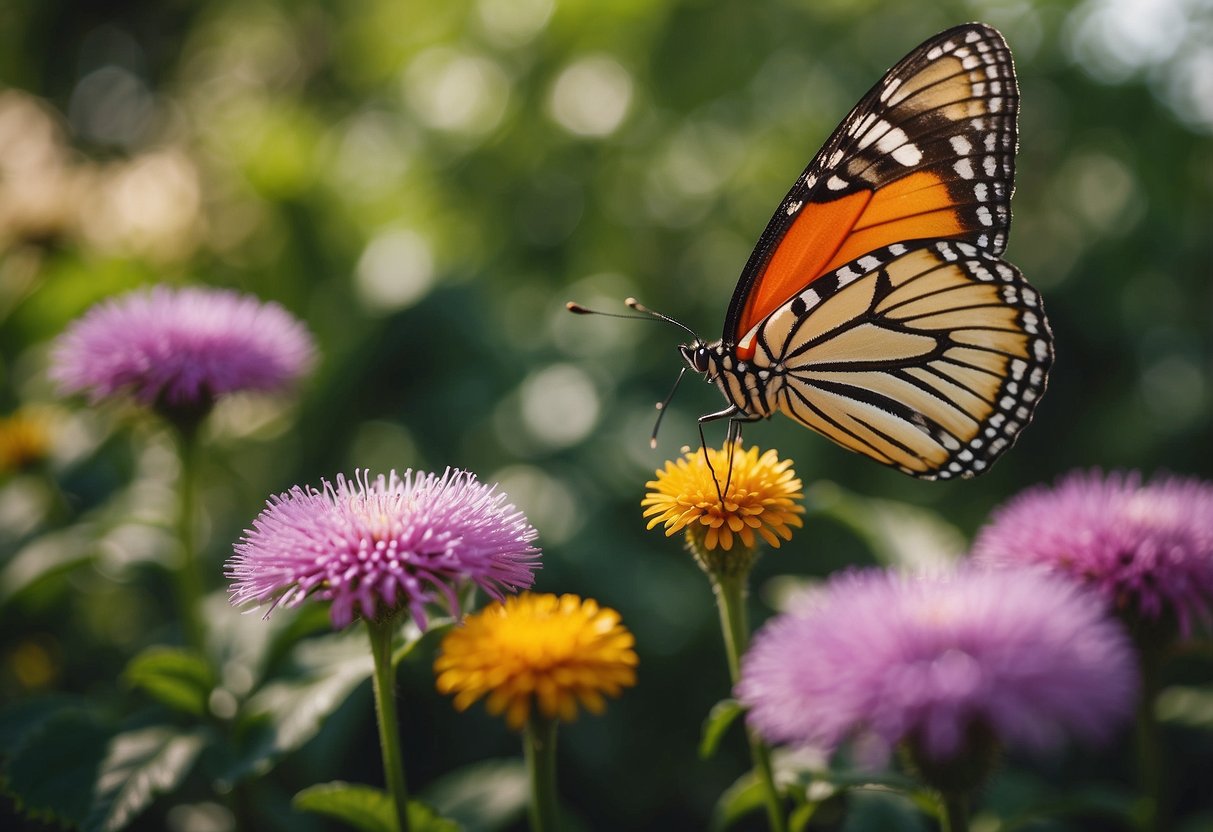
Taking care of a butterfly garden involves keeping the plants healthy and ensuring butterflies have a safe environment. Focus on proper watering, regular maintenance, and effective pest control.
Watering and Maintenance Tips
Your butterfly garden needs just the right amount of water. Make sure to water your garden early in the morning. This helps the plants absorb moisture before the sun gets too hot. Watering deeply once or twice a week is usually better than watering lightly every day.
Remove dead or diseased plants promptly to keep your garden healthy. Trim back any overgrown plants to allow air flow and sunlight to reach all parts of the garden. Use mulch to retain moisture and prevent weeds. Keep the soil loose with a garden fork to help water reach the roots.
Pest Control in Butterfly Gardens
Using natural pest control methods helps protect butterflies and their larvae. Avoid chemical pesticides, as they can harm butterflies. Instead, introduce beneficial insects like ladybugs to eat harmful pests. You can also use insecticidal soaps made from natural ingredients.
Regularly inspect your plants for signs of pests like aphids or caterpillars. Handpick any pests you find and remove them from the garden. Planting pest-resistant plants can also help minimize issues. Consider using homemade sprays made from garlic or neem oil to deter pests without harming butterflies.







